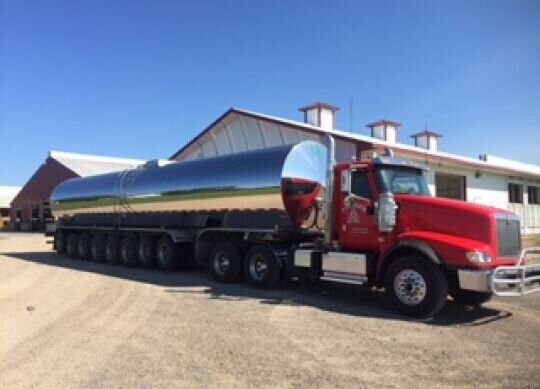Inflation, interest rates, labor and logistics will marginalize higher milk prices
While the market outlook for U.S. dairy prices looks promising, American Farm Bureau Chief Economist Roger Cryan says higher milk prices won’t look as good as they have in the past, as rising costs and difficulties in processing and marketing continue through the new year.
He credits the pandemic-driven market forces in 2020 and 2021, evolving product demand, supply chain challenges and the unknowns of COVID as affecting dairy farm profitability in 2022.
“The big immediate impact of the pandemic on the economy was to change the shape of consumer demand. Live entertainment venues, sports arenas and restaurants all shut down or moved to remote or take-out business for a while,” Cryan wrote in recent Market Intel report.
Almost two years later, none of those businesses are back to pre-pandemic demand levels. Instead, demand has shifted to “stuff” including more food to eat at home, more things to use at home, and more materials to improve the home.
By changing the shape of what was demanded, manufacturing and transportation have struggled and will continue to struggle through 2022 to catch up to demand.
“This evolving situation has left crop farmers facing high prices or short supplies of fertilizers and other inputs,” Cryan said. “These all contribute to higher costs on the dairy that will offset higher projected milk prices.”
The “Great Resignation” of 2021 — when millions of people dropped out of the workforce, retired early, extended their search for a more satisfying job, or decided not to work because they didn’t feel safe working in the pandemic — is driving up labor costs for dairy producers.
“Dairy farmers have faced difficulties finding hired help for many years; now, the whole economy is in the same boat. This has made it more challenging for employers to find help in all sectors, and also contributes to higher costs for farmers,” Cryan said.
The great cheese shift
At the beginning of 2020, the dairy industry knew it was short of block cheddar cheese processing capacity, and several handlers were building new plants and lines to address that.
Then the pandemic lockdown shifted consumer demand from processed food-service cheese (made from barrel cheddar) to natural cheese (including cheddar cut from blocks) for at-home consumption.
“There was plenty of milk, but not enough block cheese, so the Class III price rose far above other Class prices for most of six months; massive de-pooling of Class III milk made the negative producer price differentials (PPDs) even bigger; and the federal orders failed in their basic aim of tending to pay a uniform price to all producers in a market,” Cryan said.
As of the start of 2022, several new and existing large cheese plants have added substantial new block capacity. As a result, for the first time in many years, Cryan said analysts now expect that butter and powder values will drive the market as a hungry world market demands these products.
The rising cost factors
November’s Consumer Price Index was up 6.9% from a year ago, the highest price inflation in nearly 40 years, according to Cryan, and quickly becoming a major concern for farmers and the entire U.S. economy.
Supply chain issues, including overloaded ports and a truck driver shortage, have contributed to inflation by adding costs and slowing down the economy, which might otherwise have absorbed extra dollars in the American economy.
Cryan added the influx of federal stimulus dollars since the beginning of the pandemic is also driving inflationary pressure.
“The Federal Reserve Bank has been trying to boost the economy by creating a lot of money, essentially loaning money that didn’t exist before and buying bonds with money that didn’t exist before,” Cryan said.
The unprecedented rapid 41% growth in the money supply since early February 2020 has resulted in too many dollars, with not enough economic growth in the way of consumer goods to absorb them.
“In this case, it has also arguably led to the overheating of the economy, resulting in many of the bottlenecks and supply shortages as an overstimulated demand chases too little capacity to produce,” Cryan added.
Borrowing concerns loom
While inflation creates price uncertainty, it also complicates economic relationships for the Federal Reserve creating a “Catch-22” scenario. If the Fed doesn’t slow the growth in the supply of money and inflation becomes our long-term expectation, it will raise interest rates and complicate borrowing.
“The history of the 1970s and ’80s will tell us, if we don’t ignore it, that the longer we wait, the more painful it will be when we do control inflation, as it was for so many farmers,” Cryan said.
“The good news is that the Federal Reserve Bank seems to be taking inflation seriously, signaling a slowdown in their bond purchasing and suggesting likely increases in their lending rates in 2022.”



